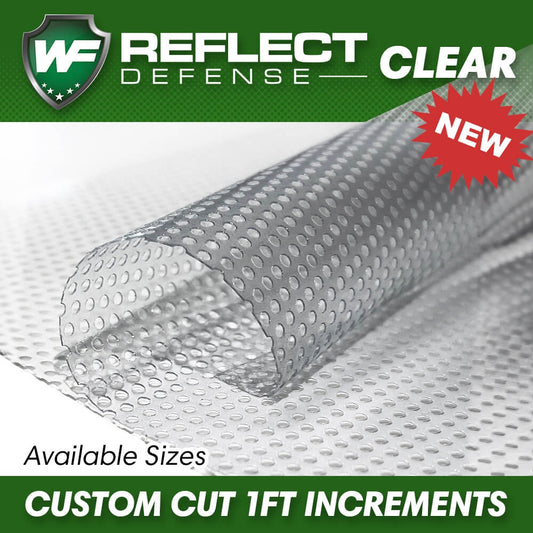Ever walked barefoot on your artificial lawn on a sunny day and felt like you've stepped into a frying pan? You're not alone. Many homeowners are discovering that their dream of a maintenance-free, evergreen lawn comes with an unexpected side effect: heat damage. As a professional window tinting and glass contractor, I've seen firsthand how this issue can not only tarnish the look of your lawn but also impact its longevity. Let me walk you through what's cooking your artificial turf and how you can turn down the heat.
Understanding Heat Damage on Synthetic Turf
Imagine your artificial turf as a low-maintenance pet that doesn't like the sun too much. When exposed to excessive heat, it can get "sunburned" – showing signs of melting, discoloration, and even warping. This damage isn't just unsightly; it can lead to costly repairs or replacements. But what's turning up the heat on your synthetic grass?
The Surprising Culprits Behind Heat Damage
Reflective Surfaces
Have you ever noticed the way sunlight bounces off your windows, creating a spotlight effect on certain areas of your lawn? This isn't just sunlight; it's a concentrated beam that can significantly increase the temperature of your turf. One summer, a client of mine noticed a peculiar pattern of damage on their lawn. After a bit of detective work, we traced it back to the reflection from their large patio doors. It was like a magnifying glass focusing the sun's rays onto their turf!
Low-Quality Turf Materials
Not all artificial turfs are created equal. Some are more susceptible to heat damage due to the materials they're made from. Cheaper options might look appealing, but they can end up costing you more in the long run if they need frequent replacements. It's like choosing between a cheap umbrella that flips inside out at the first gust of wind and a sturdy one that keeps you dry through a storm.
Incorrect Installation
Proper installation is crucial for dissipating heat on your artificial turf. If installed incorrectly, your turf might not have adequate ventilation, leading to heat buildup. Think of it as wearing a tight, non-breathable shirt on a hot day versus a loose, airy one. The difference in comfort is night and day!
Role of Professional Window Tinting and Glass Solutions
Here's where my expertise comes into play. Window tinting can significantly reduce the amount of sunlight and, consequently, heat reaching your artificial lawn.
Introduction to Window Tinting
Window films are not just for cars or office buildings; they're a game-changer for residential settings too. By applying the right film to your home's windows, you can cut down on the reflective and direct sunlight that contributes to turf damage.
Types of Window Films
There's a variety of window films to choose from, each with its benefits. Solar control films can reduce heat transmission, while low-emissivity (Low-E) films go a step further by improving energy efficiency inside your home. It's like choosing sunglasses for your home; you want the ones that provide the best UV protection and fit the style of your house.
How to prevent turf burning caused by window reflections?
- Apply Reflect Defense Window Film - Turf Shielding Window films protect turf by reducing refracting at angles and effectively prevent turf damage by reducing the concentration of magnified light on your turf.
- Apply Solar Screens - Solar screens to the same thing as Reflect Defense Window Film. However solar screens are detachable and reusable.
- get strategic when planning your artifical turf installation, planning can help avoid melting entirely but preventing damage in the first place by not having turf in areas that reflections appear.
Benefits Beyond Heat Reduction
Apart from protecting your turf, window films offer added advantages, such as UV protection (keeping your furnishings from fading), energy savings, and even an extra layer of privacy. One client was thrilled to find that, after installing window films, their living room felt cooler and more comfortable during the peak summer months – a win-win!
Preventative Measures for Homeowners
Landscape Design Tips
Smart landscaping can provide natural shade and protection for your artificial turf. Consider planting trees or shrubs in strategic locations to block direct sunlight during the hottest parts of the day. It's like nature's version of window tinting.
Choosing the Right Turf
Invest in high-quality, heat-resistant artificial turf. It might be more expensive upfront, but it pays off in durability and appearance over time. Think of it as buying a high-quality tool that lasts years instead of a cheap one that breaks after a few uses.
Regular Maintenance
Even the best artificial turf needs some TLC. Keep the surface clean and free of debris to ensure proper heat dissipation. Occasionally, fluffing up the fibers can help prevent matting and ensure even wear. It's like brushing your hair to keep it looking its best.
Case Studies and Success Stories
I've worked with numerous homeowners to tackle their turf melting problems, and the results speak for themselves. One memorable project involved applying a specialized film to a series of south-facing windows. Not only did the turf stop melting, but the homeowner also reported a noticeable difference in indoor comfort and lower air conditioning costs.
Conclusion
Heat damage to your artificial lawn can be a frustrating issue, but it's not insurmountable. With the right knowledge, materials, and a bit of creativity, you can protect your synthetic turf from the sun's harsh effects.





